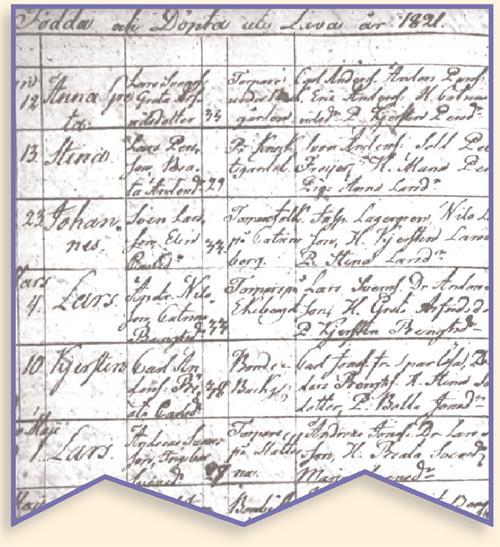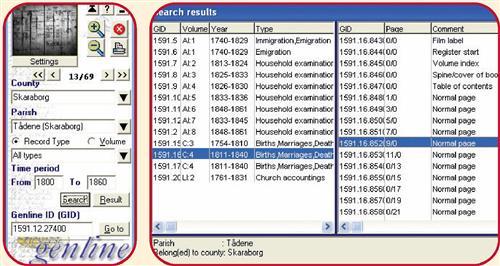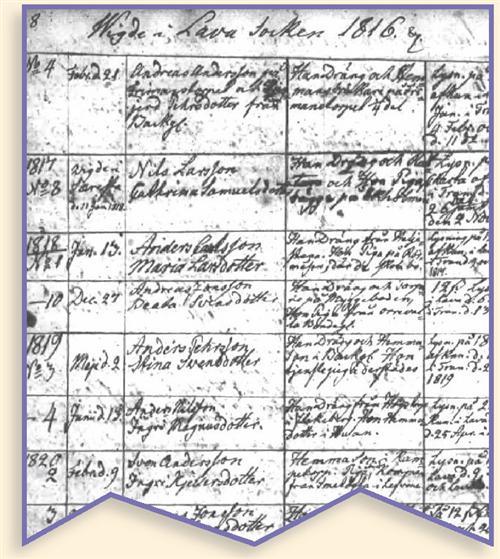Sign up for the Family Tree Newsletter! Plus, you’ll receive our 10 Essential Genealogy Research Forms PDF as a special thank you.
Get Your Free Genealogy Forms
"*" indicates required fields

The volume of records alone would leave any Swedish researcher licking his lips like a kid in a candy store. But the reward gets even sweeter: In Sweden, as in other Scandinavian countries, the state Lutheran church handled most of the vital-record-keeping — even for nonbelievers and adherents of other faiths. These records include marriages (Vigde), births (Födde) and deaths (Döde), typically with such genealogical goodies as the names of marrying couples’ parents or, for deaths, burial place, age at death, last residence and occupation. Beginning in 1750, parishes added what amounted to an annual census, the “household examination record” (Husförhörslängd). Ministers also were required to keep track of their flock’s emigration (Inflyttningslängd) and immigration (Utflyttningslängd), thus documenting ancestors’ movements within Sweden and across the ocean to Nordamerika. And most of these meticulous documents have survived.
In the 1950s and ’60s, the Church of Jesus Christ of Latter-day Saints’ Family History Library <www.familysearch.org> extensively microfilmed Swedish church records. The films are a great resource, but following their clues can be a slow process: You wait for film to arrive at your local Family History Center, then a record leads you to another roll you have to order — more waiting.
ADVERTISEMENT
With the advent of Genline, the waiting is over. The Web site lets you “scroll” through any microfilmed page that you please from the comfort of your home computer. If your ancestor’s trail jumps from Örebro to Skaraborg, you can switch counties with just a couple of clicks.
Using Genline is simple, though it may seem daunting at first because you have to download a small piece of software, Genline FamilyFinder. Once installed, this pops up a little “dashboard” control every time you log in to the site. It lets you easily zoom in and out, page forward and backward, and narrow your selection by county, parish, record type and date range. A miniature image of the page you’re on appears in the upper-left corner of FamilyFinder, where you can zip around the page by dragging a blue outline that represents your browser window. That’s extremely handy for “scrolling” through household inventory pages in search of your ancestors, which is what getting results in Swedish research seems inevitably to boil down to. Clicking the Settings tab opens another panel where you can lighten or darken the image, flip or rotate, and even change the language used in the program. (Don’t worry — the site works in English, and there’s an online dictionary to help translate 5,500 common Swedish words.)
Once you’ve selected a set of microfilmed records to peruse, up pops a window where you can pick individual volumes and, within each, actual pages. When you start looking at images, though, clicking the forward and back arrows on the floating FamilyFinder is the easiest way to “flip” pages.
ADVERTISEMENT
The images load remarkably quickly and are as clear as the originals allow. Once a page has loaded, zooming in or scrolling around is almost instantaneous. Images print crisply and simply, too, so you can save your finds.
The only thing you can’t do is enter a name and search for it — these images are digitized, not transcribed, and there’s no corresponding every-name index as there is with online US census pages. So you still have to do some brute-force hunting for your ancestors. Also, you’ll need to focus on places rather than surnames, which change every generation in the Swedish patronymic system (children take their fathers’ first names as surnames). To make your quest more efficient, check out the free online beginner guides or invest in the new book Your Swedish Roots by Per Clemensson and Kjell Andersson (Ancestry, $24.95), published in collaboration with Genline.
The other caveat: Genline isn’t cheap. Compared to subscription-based sites you may already be familiar with, such as Ancestry.com, its price tag is a bit breathtaking, especially given the sinking dollar. An annual subscription costs a little more than $400. The site offers a wide variety of plans to fit your budget, including hourly packages and monthly subscriptions (about $45).

ADVERTISEMENT

